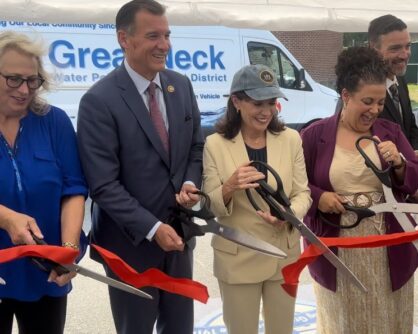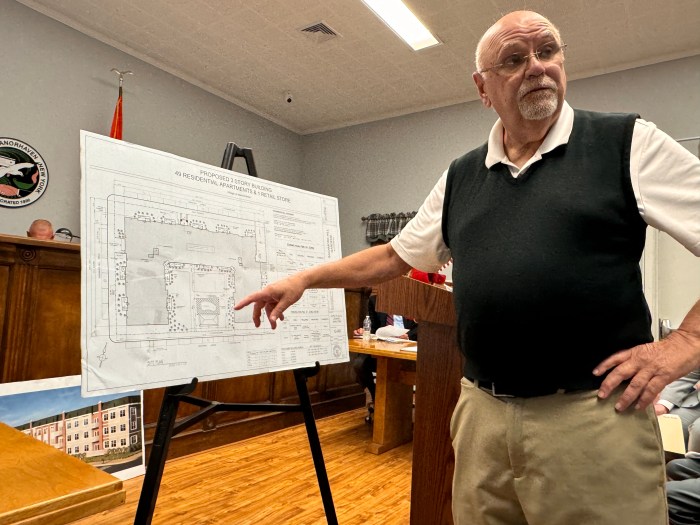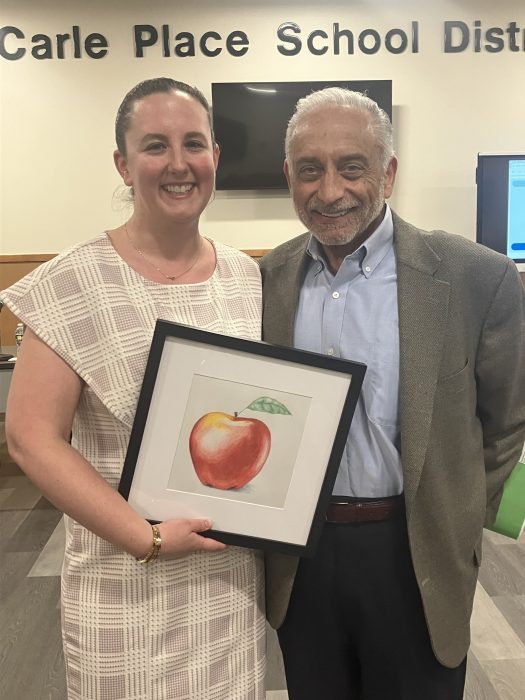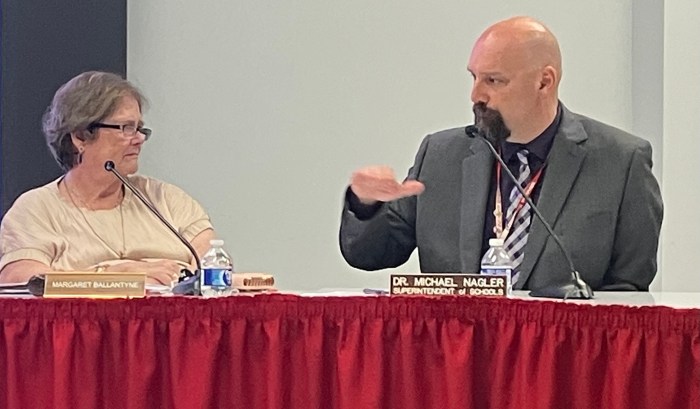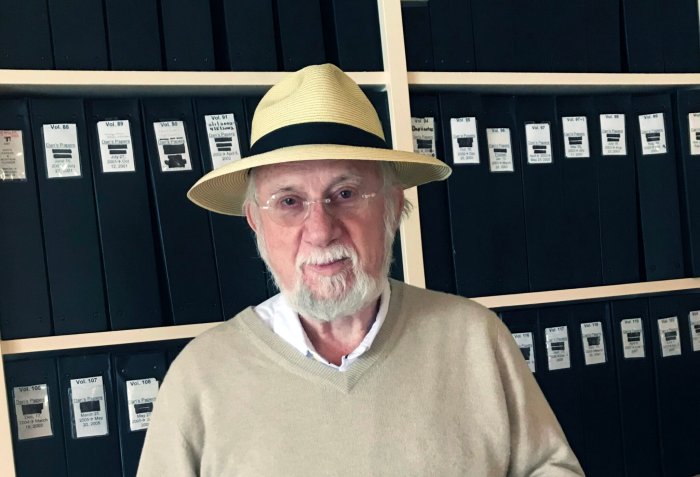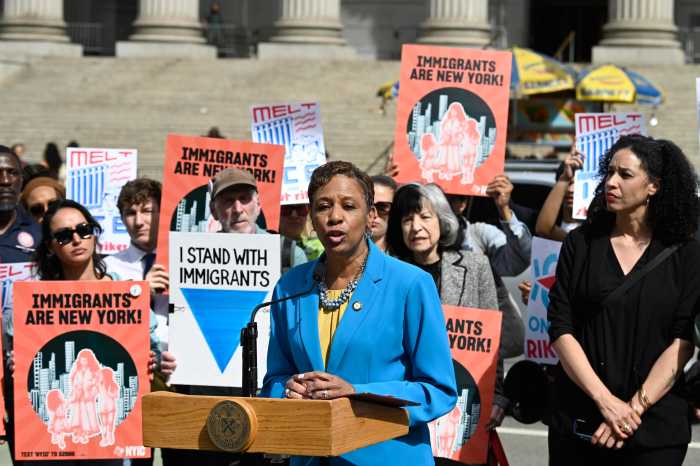Gov. Kathy Hochul, Rep. Tom Suozzi (D–Glen Cove), and state Assemblywoman Gina Sillitti (D–Port Washington) cut the ribbon Tuesday afternoon on the Great Neck Water Pollution Control District’s new state-funded projects, which the electeds called environmental and taxpayer-conscious infrastructure.
“Nowhere ever should we take for granted the availability of clean water,” Hochul said. “It is a gift from god and it’s up to all of us to make sure we preserve it and make sure that our communities are sustained in a healthy, viable way.”
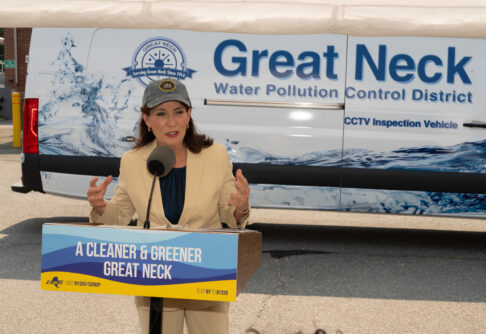
The Great Neck Water Pollution District is the region’s sewer district and wastewater treatment facility.
District Chairman Steve Reiter said the district’s mission for environmental sustainability and cost-effectiveness is also engrained in its services to five Great Neck villages.
A $12 million state grant funded multiple projects at the facility, including its grease receiving station, anaerobic digestor and microturbine installations.
Reiter said these projects work synergistically.
The district’s grease receiving station is where more than 150 local restaurants can dispose of their grease—the only one of its kind in Nassau County. Dumping their grease at the wastewater treatment facility prevents it from going into the landfill.
The grease then enhances the anaerobic digestor, which produces methane gas and waste. The methane gas is then conditioned and used as fuel for the microturbine installations.
The microturbine installations are essentially small jet engines that produce electricity to operate the facility. These microturbines produce 50% of the district’s electrical needs and 100% of its heating requirements.
Implementing these three projects, Reiter said, not only will it contribute to environmental sustainability but also ease constituents’ costs. He estimated the cost savings to be more than $445,000 in 2023.
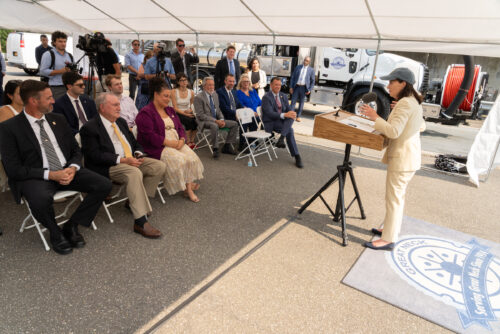
“So it’s a win-win for our residents and the environment and continues our mission to use innovation, advanced technology and sustainable practices to meet our goals,” Reiter said. “Everything we do at the Great Neck Water Pollution and Control District is done for the benefit of our residents and the environment.”
Hochul called the system “cost-effective renewable energy that must be replicated.”
Suozzi said that while the projects may not appear glamorous, the infrastructure will set the peninsula on a positive path of economic and environmental sustainability.
“When you paint the front of the house, everybody says ‘Wow, look how great that house looks.’ It cost you $600 to do it,” Suozzi said. “When you spend $6,000 to fix the plumbing, nobody says ‘Boy, look at your drainage. Everything flushes so well it’s so great.’ This is the expensive infrastructure that makes it possible to live on this peninsula.”
Suozzi announced two weeks ago that funds for various village and district projects, including $1,105,800 for the Great Neck Water Pollution Control District, were included in the first draft of the 2025 federal spending bill.
He said these funds will be voted on in the House next week but, if approved, will likely not be delivered for another year.
While Hochul was in Nassau County, she also visited Port Washington to announce $7.7 million for Shoreline Restoration in Baxter Estates and $1 million for an accessible playground in Port Washington North.
“We have no expectation that our small villages have the resources to do what is necessary. So we are part of the solution,” said Hochul. “We need to be able to protect the residents here with this investment. It’s going to be completely transformative.”
The $7.7 million for the Village of Baxter Estates will help restore the shoreline of Baxter Beach, restore the seawall and combat erosion and flooding on Shore Road. One lane of Shore Road is currently close due to the undermining caused by the damaged seawall. Shore Road is a major road for Port Washington residents and visitors, as it sees an average of 8,000 vehicles weekly.
The $1 million for the Village of Port Washington North is going to help the village with their Accessible Playground and Recreational Facility Project. The plans include providing a safe space for children to have fun and socialize and making the playground accessible for those with handicaps and on the autism spectrum.




